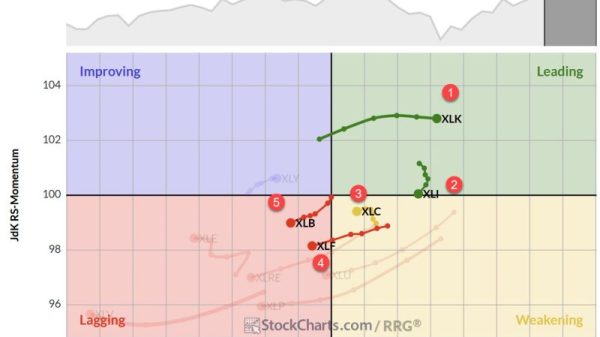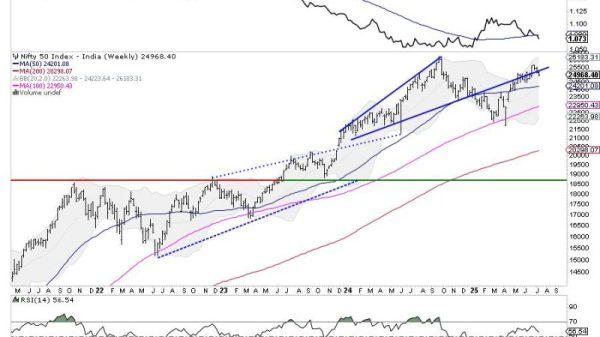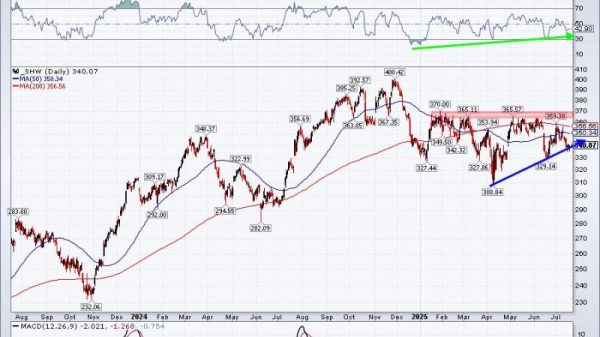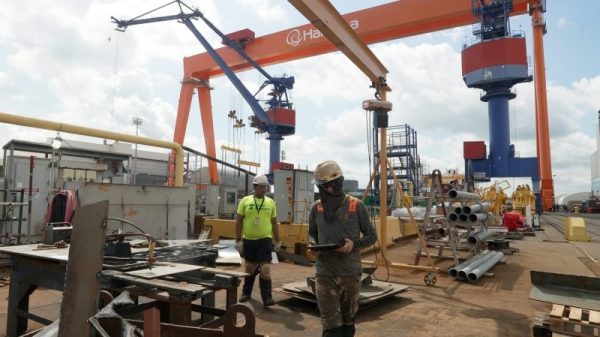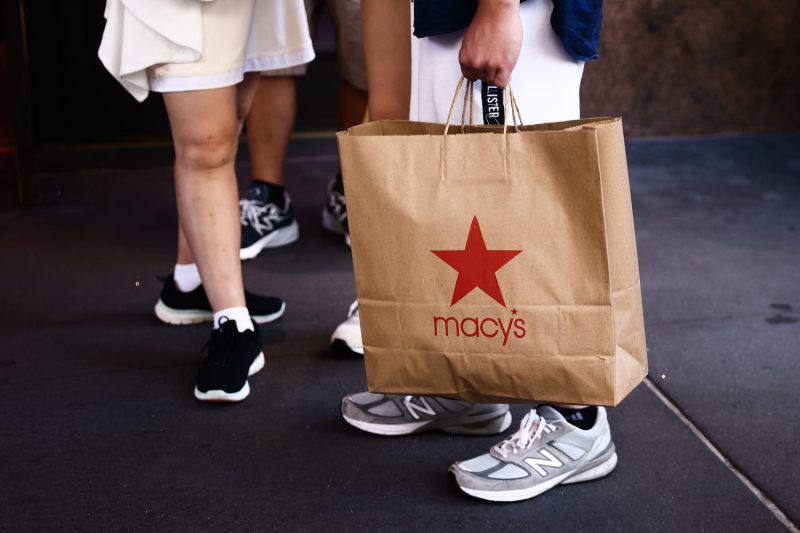Macy’s decision to close nearly a third of its stores will spark change in malls and communities across the U.S.
Some of those transformations may catch shoppers by surprise.
The retailer said in late February that it plans to close about 150 of its namesake locations by early 2027. Macy’s has not yet revealed which stores it will shutter. When CEO Tony Spring announced the move, he said the stores that Macy’s will close account for 25% of the company’s gross square footage but less than 10% of its sales.
The company plans to invest more in the approximately 350 namesake stores that will remain, and open new locations for its better-performing brands: higher-end department store Bloomingdale’s and beauty chain Bluemercury.
Yet the closures will be the latest catalyst that pressures malls to evolve to changing consumer tastes. Macy’s is shuttering stores as the growth of online shopping and demographic shifts mean some small towns or regions can no longer support a bustling shopping center.
Macy’s closures will ultimately be a good thing for many malls and customers, said Chris Wimmer, senior director at Fitch Ratings who tracks real estate investment trusts. The department store’s exit will accelerate the inevitable demise of “low quality malls that really don’t need to exist anymore,” Wimmer said. The closures will give the owners of healthier malls a chance to breathe new life and relevance into a shopping center.
In those malls, which tend to have better locations and owners with stronger balance sheets, he said owners are “itching to get their hands on their Macy’s” and free up prime real estate.
Macy’s owns the majority of its namesake stores. That dates back to when mall owners would give department stores a space to draw shoppers and make money by charging other retailers rent.
Macy’s closures will also make way for real estate developments that may better match the changing demographics or economy of their surroundings, whether through construction of a medical building, a retirement community or a grocery store.
But Wimmer acknowledged some of the closed Macy’s may be a tougher sell, and their exit could be the nail in the coffin for a mall that’s becoming an eyesore.
“If it’s in a really bad location where no one wants to spend money to knock it down, then it could rot,” he said.
Shoppers walk through the Fashion Centre at Pentagon City, a shopping mall in Arlington, Virginia, February 2, 2024.
Macy’s is trimming its locations as department stores and malls alike dwindle.
Macy’s has left many malls already. It has closed more than a third of its namesake stores over the last 10 years. As of early May, the company had 503 Macy’s stores, including a small number of other concepts outside malls.
Other anchors have downsized or disappeared from malls, including Sears, Lord & Taylor and JCPenney.
The number of malls has shrunk as well. Real estate firms typically divide malls into class A and B, which have higher occupancy rates and lower sales density, and class C and D, which have lower occupancy rates and higher sales density.
There were 352 shopping malls classified as Class A and B at the end of 2016, according to company reports, S&P Capital IQ and Coresight Research. That fell to 316 malls by the end of 2022.
That decline is sharper among Class C and D shopping malls, which fell from 684 malls in 2016 to 287 in 2022, according to the companies’ research.
Weak U.S. malls have become weaker, and the strong shopping centers have become places where all retailers and consumers want to be, said Anand Kumar, an associate director of research for Coresight. He expects that trend to continue. By 2030, he said, top-tier malls will draw a greater share of total mall spending and more lower-tier malls will either close or be forced to convert more space into non-retail uses.
At some distressed malls, Macy’s may be the last anchor that remains.
Kumar said the U.S. doesn’t need as many malls as customers buy more on retailers’ websites. He added many of the fastest growing retailers in terms of store count, such as Dollar General, Five Below and T.J. Maxx, want to be in suburban strip centers rather than malls.
He said adding more diverse tenants to malls, such as medical buildings, co-working spaces, nail salons and restaurants, can be a smarter move for mall owners to drum up traffic.
That’s what many mall owners have done and could do with vacant former Macy’s locations.
Even if a mall wants to fill a Macy’s space with a retailer, there are few single tenants that can take up the whole box, said Naveen Jaggi, president of retail advisory services at JLL. The ones that could, such as Nordstrom and Belk, generally aren’t opening up huge stores like they did in the past, he said.
Macy’s stores typically range between 200,000 and 225,000 square feet.
Stonestown Galleria is an example of how a mall can change after Macy’s closes. The mall, which is in San Francisco, has a Whole Foods, movie theater, sporting goods store and a healthcare facility where the department store once was.
If history is a guide, former Macy’s stores will likely transform into spaces and spark projects that surprise longtime mallgoers. The closures of mall anchors have cleared the way for new apartment complexes and entertainment wings with restaurants, amusement parks or activities such as laser tag and rock climbing.
Since 2012, major mall owner Brookfield Properties has redone more than 100 anchor boxes with capital investments of more than $2 billion.
One of the malls it retrofitted after a Macy’s closure is Stonestown Galleria. In the San Francisco mall, a former Macy’s is now a Whole Foods, movie theater, sporting goods store and health-care facility.
At Tysons Galleria in the Washington, D.C. area, Brookfield used the closure of Macy’s as an opportunity to tack on a new wing. It opened in 2021 with broader entertainment offerings, including a bowling alley and movie theater; home furnishing stores including RH and Crate & Barrel; new dining options and a showroom for electric vehicle brand Lucid Motors.
The projects take money and time, said Adam Tritt, chief development officer for Brookfield Properties’ U.S. retail portfolio. As part of the San Francisco conversion, Brookfield had to raise the height of the roof, add more windows and put in a glass storefront.
Those projects show that for mall owners, the closure of an anchor such as Macy’s can come with a silver lining, Tritt said. It clears the way for more flexible and creative uses that draw more people to the mall.
“There’s a collective challenge to get people off the couch and out of the house,” he said.
And by turning a big box into smaller retail or dining spaces that can be leased, the mall owner can be nimbler.
“We are able to break it down into smaller digestible pieces, so that as trends move and communities evolve we are able to respond more quickly,” he said.
At other malls, the tenants that replace a Macy’s could be even more unique.
Near Salt Lake City, Utah, a former Macy’s will soon become the location of the training and practice facility for the NHL’s new addition, the Utah Hockey Club, complete with ice skating rinks and corporate offices.
And in some parts of the country, consumers’ shift from shopping at malls to shopping on their couches has taken physical form. Amazon opened a huge fulfillment center on the former site of Randall Park Mall. The mall in Northeast Ohio struggled with dwindling occupancy rates and ultimately lost mall anchors, including Dillards, JCPenney and Macy’s.
And earlier this summer, Amazon opened another fulfillment center in Baton Rouge, Louisiana — also on a former mall site.






